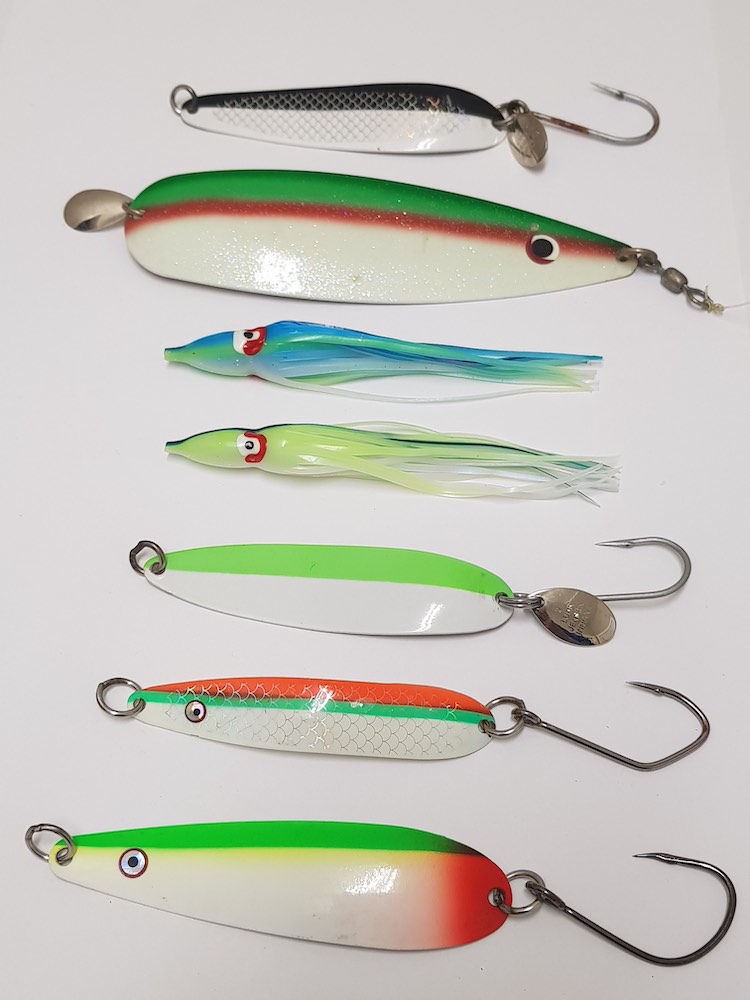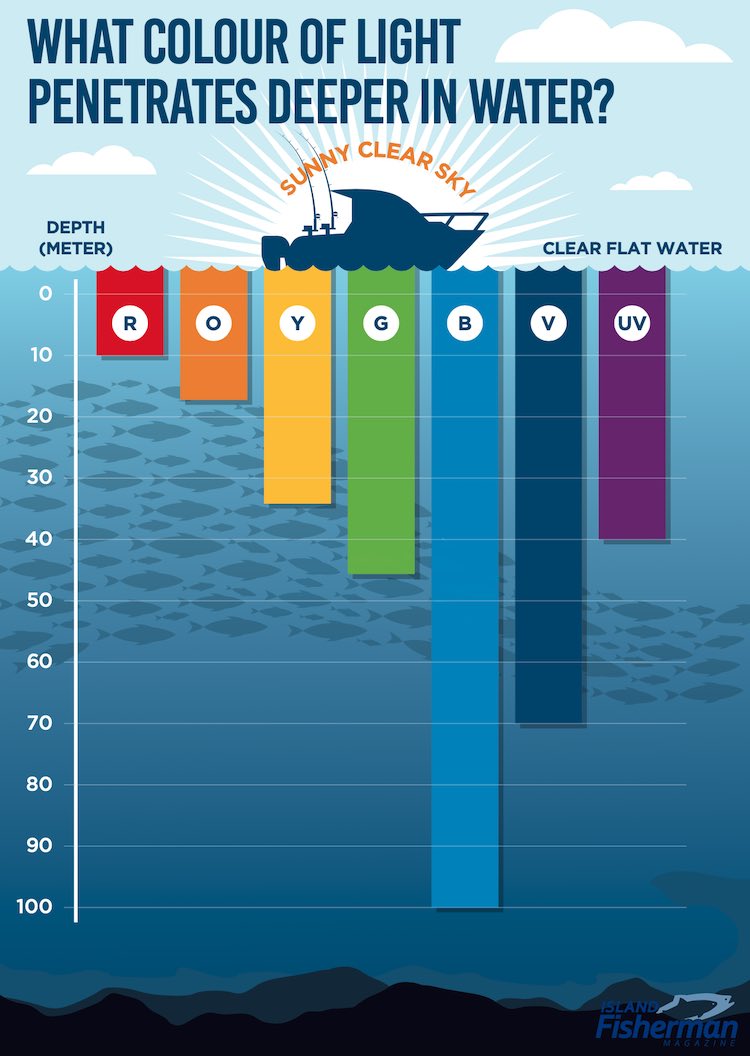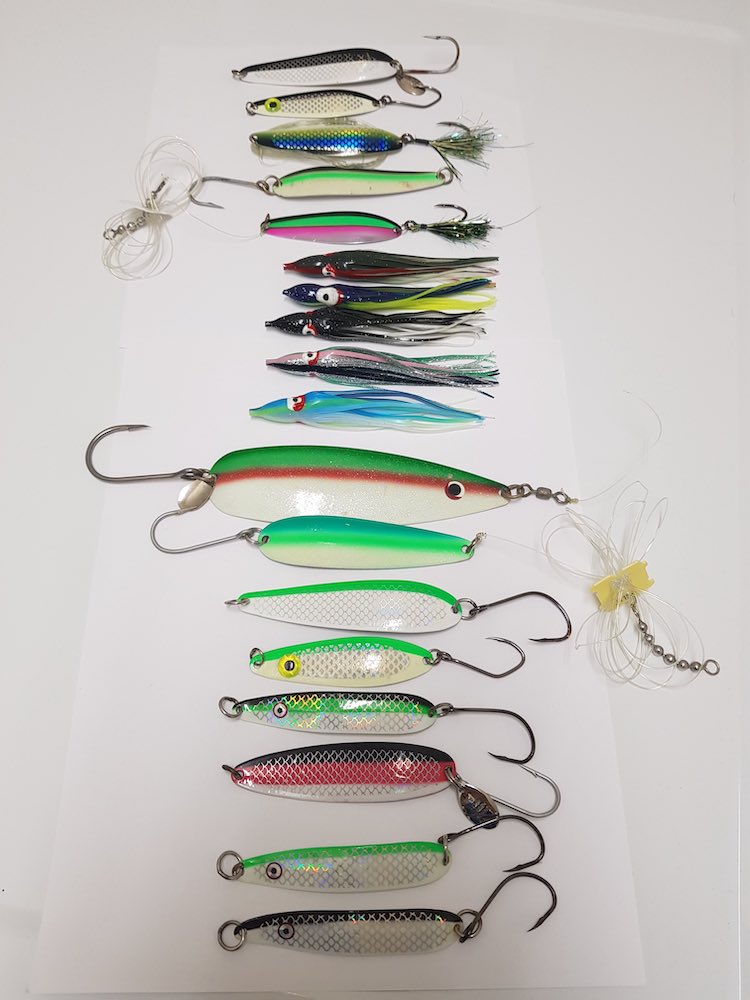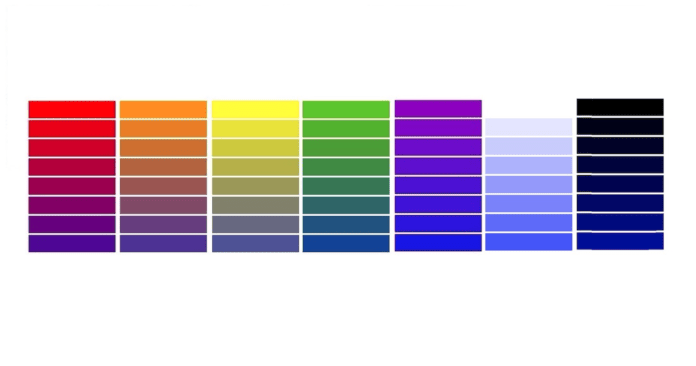Ever wonder why some lure colours just produce fish? Cop Car, Army Truck UV Glow, Blue Meanie UV, Jack Smith UV, and white/green Glow are some of the popular colours that have produced fish over the ages. Outfitter, Bon Chovy, and No Bananas are popular colours nowadays, and producing fish (see Figure 1, missing Bon Chovy). But why? The science behind it is very interesting, but we will get to the point so you can put more fish into the tub.

Can Fish See Colour?
Some fish see shades of colour and/or UV. Trout and salmon use UV vision to find plankton. We see visible colours so clearly above water, but colours fade in water at certain depths due to light refraction and light wave energy in water. We do not know the exact depths when a certain colour fades into bluish colour in freshwater or saltwater. However, we can set a scenario to get the basic understanding. In a sunny clear sky and clear flat-water day in a perfect world scenario, we will guess the deepest visible colour depth is 100 metres (see colour and depth chart, bottom right). The first colour to fade into greyish blue colour will be red. We can assume red will completely fade at around 10 metres. Other colours still are visible at this depth, but with blue reflected more in each colour. If the lure is green at 10 metres, you will see the fish is still shades of green. At 20 metres, we can assume orange to greyish blue, and then yellow at 35 metres, green at 45 metres, purple at 75 metres, and blue at 100 metres (see colour fade, top right).
UVA & UVB Light and Water Penetration

We do not know how far UVA and UVB will travel, but we can guess 40 metres from some marine studies. What about the colour white? White is composed of all the colours combined. That means white will have many shades of blue at different depths of water until it reflects blue colour. Black will always be blackish at all depths because it absorbs all colours. Eventually all colours will turn black below 100 metres because there is no more visible light. White colour lures will turn blue colour at 100 metres. That’s mind blowing, but true. Scuba divers will see shades of blue when they dive down deep without high-power lights. They will see shades of blue swimming around, and that will be fish.
Why Do Colour Combinations Work For Fishing
Now that we know what visible colours look like underwater, we can look at why those colour combos work. We know that each colour will fade and turn greyish blue. By that theory let us look at some lure colour combos. “When in doubt, throw the Outfitter out,” said Rick Clark from Born to Fish BC (see Figure 3, Outfitter spoon). This is so true for most people because of the depth of water where they are putting the lure down. Let us say we are fishing around 40 metres. The orange colour will fade to greyish blue colour at that depth. The light green colour still reflects greenish colour at that depth. The white is just some shade of blue. Does this look like a minnow, herring, anchovy, or bait? What about Cop Car (see Figure 3)?
Well, black stays black at most depths, and white turns to different shades of blue. It looks like baitfish. And the classic 602 Tomic plug (also Figure 3) works well at all depths imitating baitfish or squid. The glow will help it stand out in deep-water depths and lack of sunlight. Colour choices do matter, but are affected by what depth you are fishing, what kind of weather, how much sunlight, type of wave, presence of algae, and what bait you are trying to imitate.

Fishing Different Water Conditions
Use darker colours (black, violet, blue, green, and yellow) mixed with white, UV and/or glow on cloudy days or murky water (algae water). Because there is less sunlight through the water, the colours fade at shallower depths than clear sunny and clear water days (see Figure 4, examples of dark colour lures).

Apply the same colour scheme when fishing deep past 30 metres in any lighting condition. The UV and glow will give you contrast advantage to stand out at deep depths. It also stands out in murky water (see Figure 5, examples of glow colour lures).

Take advantage of this paint on your lure choice. Use bright colours (yellow, orange, red, silver, gold, pink, etc.) or any colours in UV or glow on sunny and clear water days (see Figure 6, bright colour lures). Imitate the baitfish the fish are feeding in the local area at the depth where you mark fish.

Experiment Fishing With Colour Combinations
Sometimes we just need to use weird colour combos to entice fish. These colour combos do not make any sense in terms of physics and visible light spectrum, but salmon do strike on the following: royal blue paired with chartreuse, silver doctor blue paired with black/silver/chartreuse, and chartreuse/silver, kelly green/silver, and blue paired with purple (see Figure 7, examples of these colour combos). All these colour combos are still bringing salmon into the tub on the West coast. Most experienced anglers and guides believe these colours just aggravate Chinook and coho to bite.
Now, even with all these colour combos for lures, sometimes we still need luck to hook some fish when we are out on the water. That’s fishing.

This article appeared in Island Fisherman magazine. Never miss another issue—subscribe today!







Very good info.
I will try those colors , when ever we get fishing again
Raimo